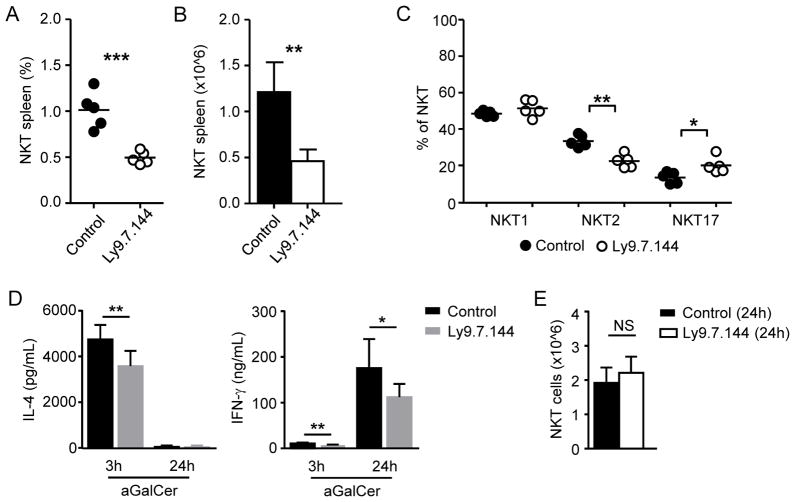Figure 3.
Treatment with a monoclonal antibody against Ly9 (Ly9.7.144) reduces peripheral iNKT cell numbers and impairs their cytokine production. (A) Frequency and (B) absolute number of total spleen iNKT cells (gated as CD1d tetramer+ B220-) in BALB/c mice 26 days after receiving a single dose (250 μg, i.p.) of Ly9.7.144 or an isotype-matching control. (C) Frequency of NKT1, NKT2, and NKT17 subsets in BALB/c mice 26 days after treatment with Ly9.7.144 or an isotype control antibody as detailed in A. (D) Serum levels of IL-4 (left) and IFN-γ (right) after in vivo challenge with αGalCer. BALB/c mice received 250 μg i.p. of Ly9.7.144 or an isotype control antibody. 24 hours later, mice were injected i.v. with 6 μg αGalCer. Serum samples were tested 3 and 24 hours after αGalCer administration. (E) Number of spleen iNKT cells in BALB/c mice 24 hours after treatment with Ly9.7.144 or control antibody. (A, C) Each dot represents an individual mouse. Small horizontal lines indicate the mean. (B, D, E) Results are expressed as mean ± SD. NS: non-significant (p > 0.05); *p < 0.05; **p < 0.01; ***p < 0.001 (unpaired two-tailed t-test). Data are representative of at least three independent experiments with 4 to 6 mice/group.

